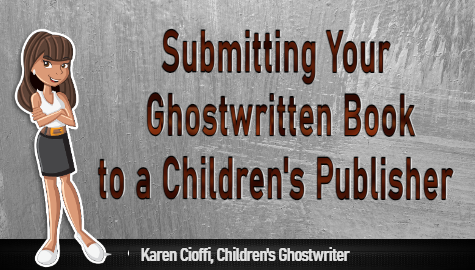If one of my clients is unsure of which publishing path to take, I always advise the client to give traditional publishing a try.
Once the author decides to give it a shot, they always asks HOW.
Let your fingers do the walking.
You’ll need to do research to submit your manuscript to traditional publishers. Do an online search for publishers who handle children’s books in the genre of your story.
You might also get the Children’s Writer’s & Illustrator’s Market. Get the most recent edition and look for publishers you think will be a good fit for your book.
This is tedious and time consuming work, but it’s the only way to get your manuscript out there and in the hands of acquisition editors.
Keep in mind that you can also submit your manuscript to literary agents who, if they accept you as a client, will then shop your manuscript around to traditional publishers.
The benefit of getting an agent is that the agent can open doors you can’t.
You’ll have to actually submit your manuscript.
While putting your work out there and possibly getting rejected it tough, there’s no way around this.
You’ve got to submit.
You’ll need to write a query letter to submit along with your picture book manuscript, or a portion of your chapter book, middle grade, or young adult.
The publisher’s website will let you know:
- How much of your manuscript should be submitted?
- If you need to email or snail mail your submission.
- If you need to email it, the site will let you know if you should attach the document/s or put everything in the body of the email.
- Other details you’ll want to pay attention to.
Go over the publishers’ guidelines carefully and follow those guidelines just as carefully. The editor who receives your submission won’t be happy if you carelessly neglect to follow the rules.
Keep submitting to different publishers. Give it at least 6 months to a year – if you have the time … and the patience.
Be careful: If the publisher asks for any money from you, they are not a ‘real’ traditional publisher.
Attend a writer’s conference.
Another way to get your foot in the publishing door is to attend writers’ conferences.
This is the best way to mingle with other authors, attend workshops, and possibly get to pitch your story to an editor or agent.
Some conferences you might look into are:
Society of Children’s Book Writers and Illustrators
Writer’s Digest Annual Conference
San Francisco Writers Conference
New York Writers Workshop (NYWW)
For a much BIGGER list of conferences, check out:
There are also a couple of free online writers’ conferences. Just do some research to find them.
Keep it going.
While you’re waiting for replies to your submissions, keep researching other publishers and keep submitting.
While the traditional publishing submissions process takes work and can take a long time, and there are no guarantees you’ll get a contract, it’s always about ‘nothing ventured, nothing gained.’ Persevere!
Happy hunting!

I’m a working children’s ghostwriter, rewriter, and coach. I can help turn your story into a book you’ll be proud to be the author of, one that’s publishable and marketable.
OTHER HELP I OFFER:
FICTION WRITING FOR CHILDREN COURSE
A guided self-study course and mentoring program.
HOW TO WRITE A CHILDREN’S FICTION BOOK
A DIY book to help you write your own children’s book.
You can contact me at: kcioffiventrice@gmail.com.

5 Rules to Writing a Children’s Book
16 Reasons Why You Should Publish a Book
Are You Determined to Be a Writer?


2 thoughts on “Submitting Your Ghostwritten Manuscript to a Children’s Publisher”